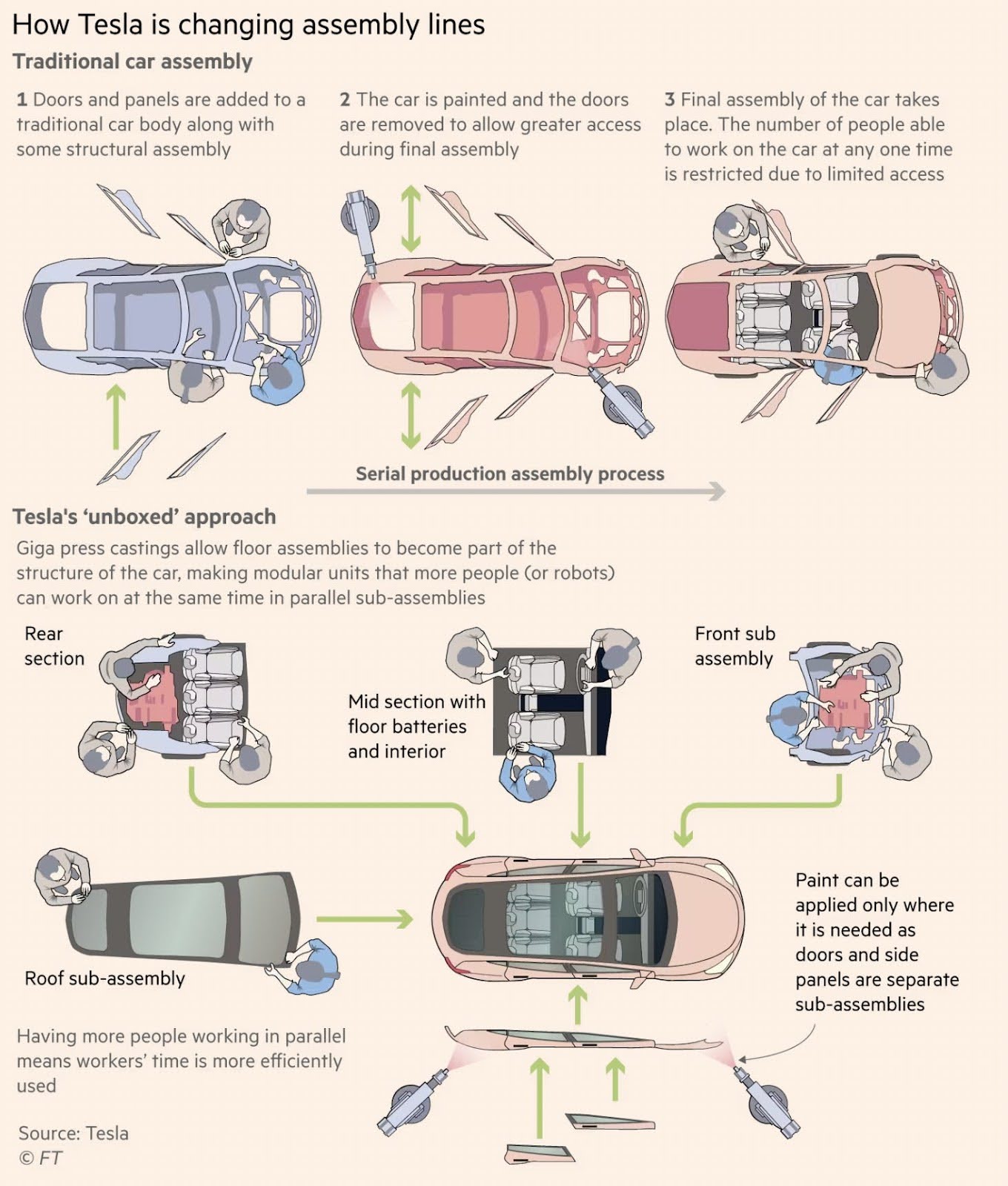
Tesla took apart the car assembly line like a marketer revamping a funnel. The traditional car build is a long chain of steps. Fail one step, and everything stalls. Tesla’s “unboxed” approach splits it into modules that happen in parallel—speeding things up and cutting friction.
Marketing analysis
This image isn’t just about cars. It’s about process thinking. Tesla spotted that cars didn’t have to be built linearly. They made sub-assemblies that could move faster and independently. Marketers can do the same with campaigns, content, or customer journeys.
Why it works
- Turns a bottleneck into parallel workflows
- Easier to optimize each part independently
- Cuts down idle time and wasted effort
- Encourages modular thinking—smarter scaling
Examples
- HubSpot splits campaigns into content “pods” that run in parallel.
- Amazon tests product pages independently before rollout.
- Figma launches features in modular releases to speed feedback.
- Nike runs creative and performance ad teams in tandem for faster launches.